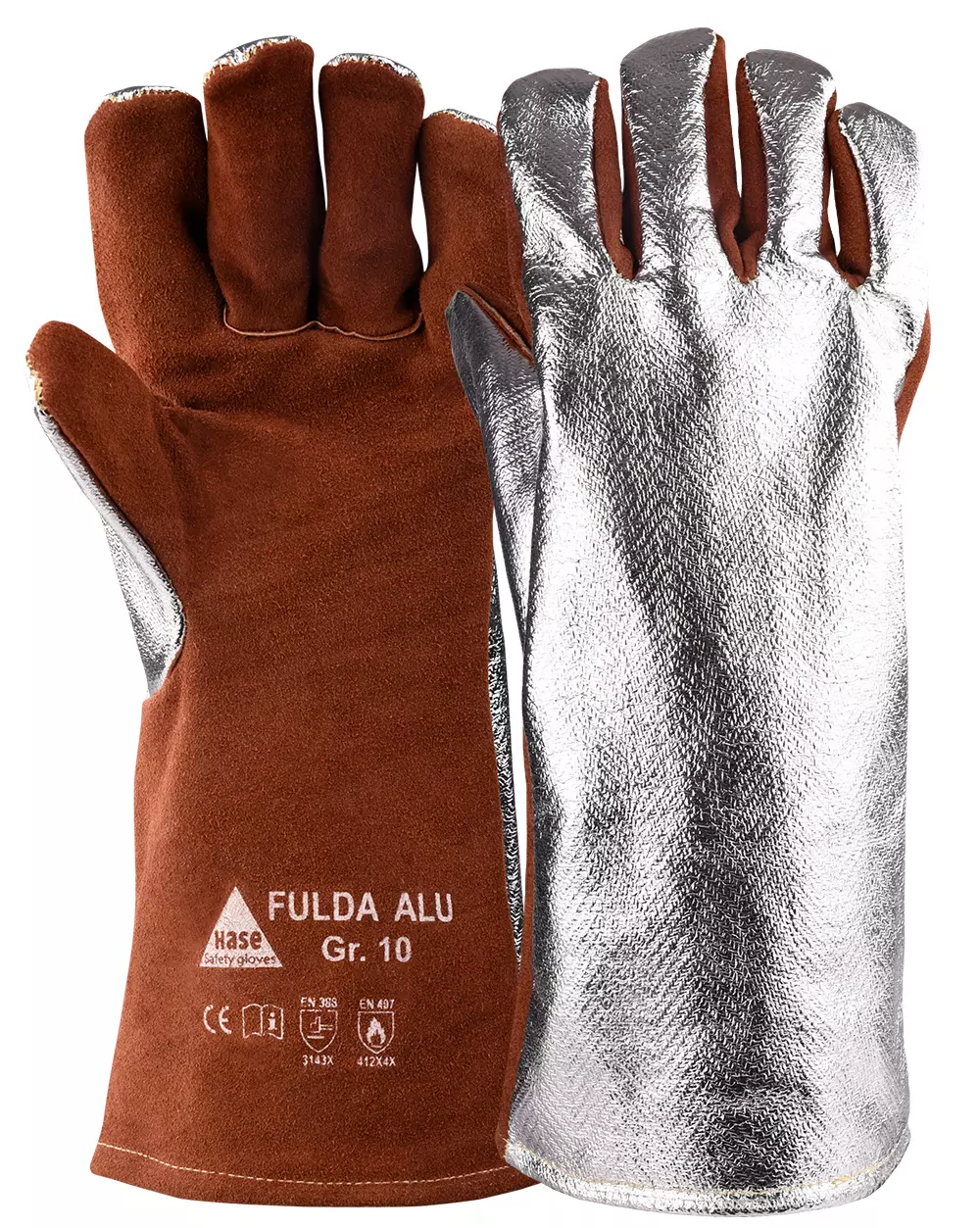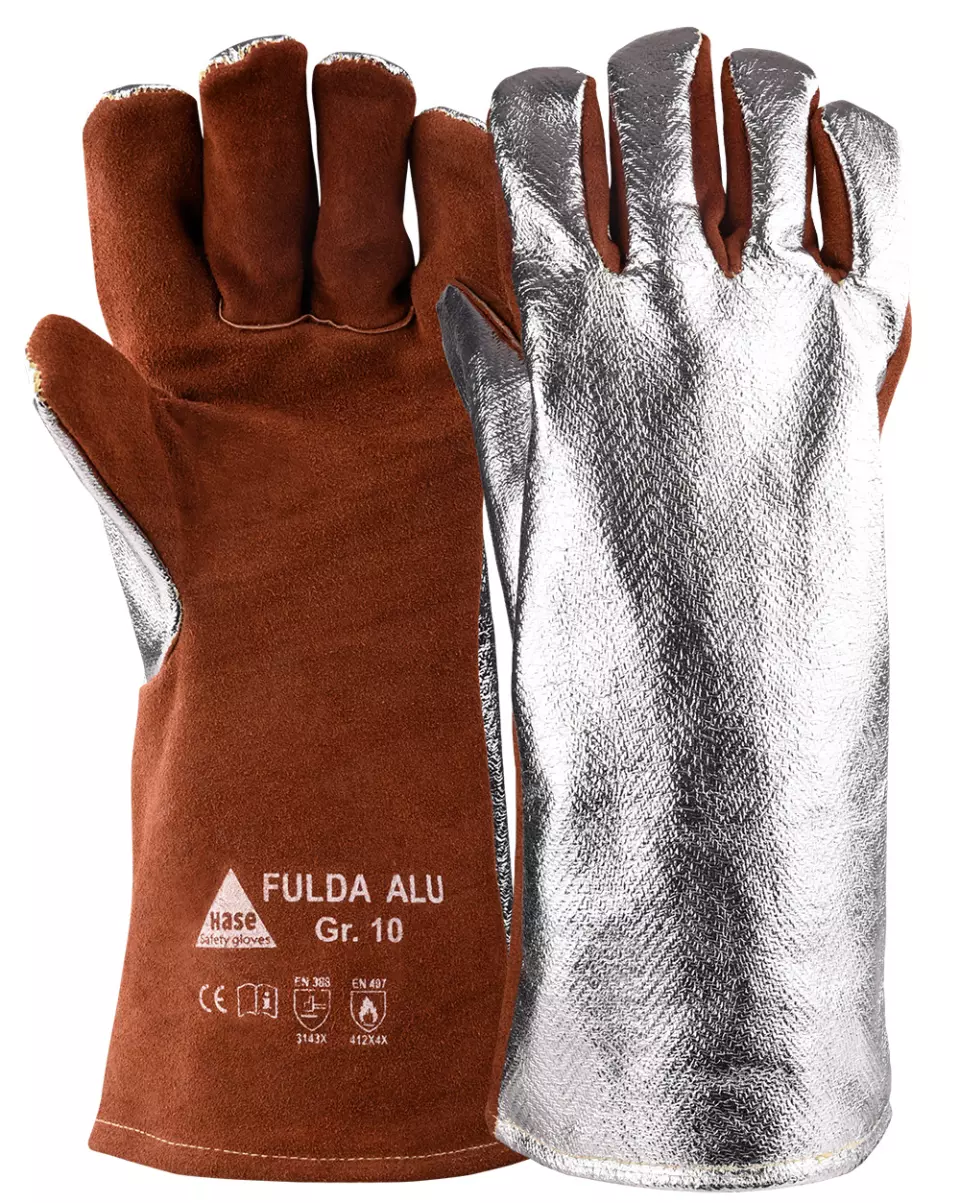
Features You'll Love

Cuff Style · Open
Determines how the glove secures around the wrist, affecting fit, protection from debris, and ease of putting gloves on and taking them off.

Palm Material · Leather
The material used on the palm side of the glove, affecting grip, durability, protection level, and comfort during use.

EN 388 · Puncture Resistance Level 3, Tear Resistance Level 4, Abrasion Resistance Level 3
EN 407 · Heat Convection Level 1, Burning Behaviour Level 4, Heat Contact Level 2, Radiant Heat Level X, Metal Splash Resistance Level 4
Withstands strong pressure from sharp objects like nails or thick splinters.
Offers the highest level of protection against tearing, withstanding a strong force before ripping.
Provides good resistance against scraping, scratching, and rubbing on rough or abrasive surfaces.
Provides basic, short-term protection against heat transferred from an open flame. This glove delays heat penetration for a few seconds when briefly exposed to fire, suitable for situations with a low risk of encountering flames.
Provides the highest level of protection against catching fire when exposed to a naked flame. After the flame is removed, the material will stop burning within 2 seconds and stop glowing within 5 seconds.
This product provides protection from contact heat up to 250°C for at least 15 seconds. It is ideal for tasks where you might briefly handle hot items, such as in kitchens or workshops.
This product was not tested for protection against radiant heat, which is intense heat that can be felt from a distance. It does not claim to offer protection for tasks involving prolonged exposure to radiant heat sources.
Provides the highest level of protection against large splashes of molten metal, tested to resist amounts greater than 200 grams. This makes it essential for high-risk industrial jobs like foundry work and heavy welding.
Hase Safety Gloves
FULDA ALU Welding Gloves, Size 10, 6 pairs
FULDA ALU Welding Gloves, Size 10, 6 pairs
4.8 / 5
133,09 €
Price per 6 pairs
22,18 € / pair
Choose size
Free delivery
Features You'll Love

Cuff Style · Open
Determines how the glove secures around the wrist, affecting fit, protection from debris, and ease of putting gloves on and taking them off.

Palm Material · Leather
The material used on the palm side of the glove, affecting grip, durability, protection level, and comfort during use.

EN 388 · Puncture Resistance Level 3, Tear Resistance Level 4, Abrasion Resistance Level 3
EN 407 · Heat Convection Level 1, Burning Behaviour Level 4, Heat Contact Level 2, Radiant Heat Level X, Metal Splash Resistance Level 4
Withstands strong pressure from sharp objects like nails or thick splinters.
Offers the highest level of protection against tearing, withstanding a strong force before ripping.
Provides good resistance against scraping, scratching, and rubbing on rough or abrasive surfaces.
Provides basic, short-term protection against heat transferred from an open flame. This glove delays heat penetration for a few seconds when briefly exposed to fire, suitable for situations with a low risk of encountering flames.
Provides the highest level of protection against catching fire when exposed to a naked flame. After the flame is removed, the material will stop burning within 2 seconds and stop glowing within 5 seconds.
This product provides protection from contact heat up to 250°C for at least 15 seconds. It is ideal for tasks where you might briefly handle hot items, such as in kitchens or workshops.
This product was not tested for protection against radiant heat, which is intense heat that can be felt from a distance. It does not claim to offer protection for tasks involving prolonged exposure to radiant heat sources.
Provides the highest level of protection against large splashes of molten metal, tested to resist amounts greater than 200 grams. This makes it essential for high-risk industrial jobs like foundry work and heavy welding.
Product description
Welding glove made of sebatan split leather palm, aluminized back of the hand, Kevlar® seams, full insulation lining. EN 388, EN 407, EN 12477